Vale : Elena Petuschkova 1940 – 2007
Nearly twenty years later, I still find this story amazing. There I was in Bunyip, 80 kilometres, out of Melbourne and the phone rang – Elena Petushkova, and calling from Melbourne. The meal with her the next evening was a joy, even if there was a little ‘oh my – who is taping who’ reaction to my tape recorder (the cold war had not yet come to a decisive end…) but she had remembered all the questions I had sent to her, and was determined to get them answered between courses.
I hope by re-printing this story, it will serve as something of a memorial to this amazing woman – scientist, administrator, and rider… a rider who won a world championship at the tender age of 30, the first ever woman to become the World Champion of Dressage.Farewell, Elena, we salute you…
– Chris Hector
Re-printed from The Horse Magazine, February 1987
Elena and Pepel at Aachen in 1970
Every now and then you have the privilege of meeting one of the truly great exponents of the equestrian art – and it was indeed an honour to encounter a rider who seems to have captured the imagination of dressage enthusiasts the world over… A rider who conquered the world’s best competition back in 1970 – an international competitor who is still delighting dressage fans sixteen years later!
I suppose it was about nine months ago when a friend presented me with a delightful little book – ‘My Life and My Horses’ – written by World Dressage Champion, Elena Petushkova. It was a fascinating account of the development of dressage in a country we do not usually associate with the equestrian arts – Soviet Russia. Nothing ventured, nothing gained, I dashed off a letter to Elena Petushokva, asking her if she would be interested in contributing an article on Soviet Dressage to The Horse Magazine.
Months passed and nothing happened. I forgot about the letter until one evening the phone rang. It was Elena Petushkova, ringing from Melbourne and apologizing for taking so long to reply to my letter. “Not at all,” I assured her,”Especially when the response comes in person and from only 80 kilometres away.”
It transpires that Dr Petushkova, since Elena is also a distinguished biochemist and a Senior Research Fellow at Moscow University, when she is not riding horses, is visiting Australia as part of a Soviet Peace Delegation and as the guest of the Campaign for International Co-operation and Disarmament. We arrange to meet for dinner the following evening – the only time Elena can fit us into her very tight schedule.
I suppose every nationality has its own highly inaccurate stereotype, perhaps none more than the citizens of the Soviet Union. You know, dour, serious, reserved… Well they certainly were not describing Dr Petushkova, or the fellow members of her delegation, Dimitry Mamleev, or Boris Makarenko. They were all warm and charming dinner companions, but none more so than the diminutive red haired Elena. Despite the fact that she had finished a non-stop schedule that day, so much so that the meal was the first food since breakfast, she was still only too happy that we tuck the little cassette recorder in between the dinner plates, and conduct our interview between mouthfuls.
The story of Elena Petushkova’s rise to the pinnacle of equestrian greatness is even more amazing when we consider that she was a late starter, in her ninth year of school, when she saw an announcement that a riding school was to open in Sokolniki Park. Gradually young Elena became more interested in the sport, and in 1958 three important events were to shape the future of her life. Elena passed the entrance exams to the Biological Faculty of Moscow University, was given the opportunity to take up dressage – and she acquired her own horse!
The first horse was a wilful headstrong Arab mare, Kaplya. Nonetheless, the combination at their first appearance in the National Championships placed third in the Prix St. George. Kaplya was retired to a stud farm, and the next horse was to be crucial in Elena’s development – so crucial that twenty eight years later she still pays tribute to her as a teacher.
“In order to be a rider it is absolutely necessary to start riding with a well trained horse. A well trained horse must teach the rider – what is riding, what is dressage. Only in this way will the young rider understand the meaning of such strange and unusual words as passage, piaffe and extended trot. Old horses who can do this are like professors for the riders.”
One of the club’s trainers, Vladmir Vasiiev went to another club, leaving behind Tina, an experienced and highly trained mare who was getting on in years – but made an ideal horsemaster for Elena.
Sergey Filatov wins gold at Rome
Elena was to meet with another riding master – but this time a much more complex, and ultimately tragic, individual. Sergey Filatov was the rider who put Soviet dressage on the map, with an amazing Gold Medal victory at the Rome Olympics. It was Filatov who insisted that Elena have the experienced mare. Elena started competing with success at the Grand Prix level, and was set to achieve the honor – Master of Sport – in competition in Leningrad, when the mare broke down, and died of inflammation of the lungs. In her autobiography, Elena records her sorrow:
“I remembered her kind gentle eyes and her submissive gaze. She must have suffered during that Grand Prix test, but using her last strength she bravely went through all the movements without any need for compulsion on my part. Even though I had not been aware that she was ill, I could not forgive myself for making her work and my conscience troubles me to this day…”
“In the short time we spent working together, Tina did me a tremendous service. Grigory Anastasev, who was then the leading trainer in our country saw me riding her and insisted that I join the Soviet dressage team and be given Pepel. This marked the beginning of a sixteen year partnership with the greatest horse of my life.”
The meeting with Sergey Filatov was less of a success. Filatov rode the superb black Akhal-Teka bred stallion, Absent to gold at Rome; bronze in the Tokyo Olympics, and fourth in Mexico in 1968 – retiring only because of the rule that no horse could compete in more than three Olympics. Elena records her appreciation of Filatov as a rider:
“It was not just the partnership but the performance itself that made such an impact. It sent a shiver of excitement down the spine – a sensation one experiences only in the preserise of great art.”
But the beauty was lost when the pair left the arena…
“Filatov returned home from Rome to a hero’s welcome and as the country’s most celebrated exponent of dressage was invited to work as senior instructor at our Club. However we very soon discovered a serious and fundamental weakness in his training methods – namely his cruelty. It is hard to say whether this resulted from his habit of being carried away, when he forgot about everything except what he was trying to achieve, or whether it stemmed from the arrogance and self-confidence of a champion who could not tolerate the disgrace of anything that opposed his will. Probably it was a little of both…”
“In the end it was Filatov who removed himself from the dressage scene. He now wanders from club to club and town to town, for no one will tolerate him for long. How can one balance the great service he has rendered the sport against the great damage he has inflicted on it?” (My Life and My Horses, page 33).
Initially the meeting with Pepel was no great success either. The stallion was wild and aggressive. It took a month before Elena could persuade him to stand quietly in his box to be saddled and bridled. By 1965, the combination were selected for the first time to compete at the European Championships. Again, Elena takes up the story in her book:
“I must confess that I have a poor memory for the details of competitions, and can never remember how many points I was awarded. Although the first milestones, the most difficult moments and the happiest times remain in my mind, one competition merges into another and everything that Pepel and I experienced together seems like one long endless dressage test.”
In 1967, Elena and Pepel placed sixth at the European Dressage Championships, the best performance by a woman rider, riding at the famous Aachen – soon to be the site of the Russian rider’s greatest success. Three years later, at the World Championships, after the completion of the Grand Prix, the Soviet team was in the lead, and Elena went into the Grand Prix Special in second place, behind that wonderful German rider, Liselot Linsenhoff, with fellow team member and Mexico Gold Medallist , Kizimov only five points behind!
It was pouring rain when Elena rode in for the test, but it did not faze the wonderful black stallion, Pepel – the performance was universally applauded by spectators and critics alike, and an hour later, the Dressage World had a new Champion – thirty year old Elena Petushkova.
We pause between courses, at what point did Elena start to think that she might actually become a world champion? The response is characterised by the same warm, deep sincerity that flows so naturally from her.
“It was totally unexpected. From the very beginning I never thought about being a top level sportswoman. I just thought about the happiness of riding a horse. The happiness of finding a common language with an animal. Of course I tried to do my best all the time but not to place highly, but just because if you are doing anything then you must do your best.”
“On the eve of the World Championships I could not imagine that I could become the Champion – it was really a gift of fate.”
Not even as you rode out after doing the test?
“No, I do not think about those things. I had the feeling that everything was OK, but I could not compare with how the others went. Often when it seems to you that you did the test very well you receive unusually low marks and you can’t understand why. And there are many occasions where you are not happy with your performance and you look at the results and they are unusually high. Of course the system of judging needs to be improved but it is very difficult to do. There have been many discussions in the International Federation, but the best system is not yet found.”
Two years later, at the Munich Olympics, with a horse that was so close to being lame that Elena wondered how he would even get through the test, Elena won the individual silver medal – this time behind Liselot Linsenhoff while the Soviets took home Team Gold!
At the next World Championships in Copenhagen, Pepel and Elena placed third, behind Klimke and Linsenhoff. By 1976, the year of the Montreal Olympics, Pepel was in his twentieth year, and went lame in the lead up to the selection trials. Although he recovered in time to defeat the horse selected in the team, it was too late for him to make the journey – and the gallant stallion was retired to the Kirov Stud where he was born. As one of the few remaining sons of the celebrated Pilgrim, he is highly valued as a sire. It is not for nothing that Elena chooses to ride stallions.
“Many riders think that it is annoying to ride stallions – it takes a lot more time than a gelding or a mare, but it seems to me only fair that after a long career in the sport, that the horse should go to the stud farm and be pensioned off and have foals. That’s why I prefer stallions, I always think about their career after they finish with competition.”
Elena’s next horse was the Akhal-Teke stallion, Abakan – a son of the famous Absent, on which Fllatov won his gold medal at Rome back in 1960. For four years Elena worked with Abakan, preparing him to compete at the Olympic Games in Moscow – but only six weeks before the Games, the horse died, and Elena was left without a replacement. Not only was she very fond of Abakan, but she thought he would see out her dressage career, no other horse had been considered.
more follows
The USSR Sports Committee came to her rescue, and recommended that her club, Urozhai, buy the Trakehner stallion, Khevsur. The chestnut was one of the first graduates of the Olympic Equestrian Training Centre in Moscow – established in 1976 to buy the best two and three year olds from stud farms and give them an all round basic training before deciding where their ultimate talents lie. Khevsur had spent four years in training with Anatoly Antikyan, a former dressage rider with the Armenian team. Elena asked Anatoly to stay on and work with her:
“So it came about that I acquired a trainer as well as a horse from the Olympic Centre! Our work together is not entirely in the traditional mould of trainer and rider. Of course, Antikyan helps me and as an All-Union List 1 dressage judge. He tells me whether my horse is executing a particular movement correctly in the right rhythm, but at the same time I teach him quite a lot that he does not know. We have built up a creative working partnership which is very important to me. I do not have the time to ride more than two to three hours every day, which means in effect that I am working with only one horse, so it is also essential to have someone who can bring on my youngsters.”
Although Elena talks about ‘her’ horses – they are in fact, owned by the club to which she belongs, and it is the club that pays all the expenses of feeding and veterinary care… a far cry from the private wealth needed in most countries to compete at the highest level. But the Soviet system is obviously not without its drawbacks! At one stage the authorities apparently decided that both Elena and Pepel were past it – and her horse was despatched to another club to become a school master. Elena sought him out – and as our dinner companions had pointed out earlier in the evening – Petushkova – means little rooster. One suspects that Elena is every inch the fighter when it is necessary.
“A sad picture greeted me when I arrived at the Planernaya Centre. A dejected looking Pepel, his coat all matted and still wet after what had obviously been an intensive training session, was shuffling along on a loose rein held by some girl or other.”
The horse was returned to Elena and despite all sorts of handicaps – the pair proceeded to win the Intermediare, the Grand Prix and come second in the Special, at the National Championships – and force their selection for the coming World Championships at Copenhagen! Talking to Elena, one very much doubts that such an incident would ever occur again – she seems firmly in control of her own destiny, and is still developing her own ideas and methods of riding. Perhaps her most controversial innovation has been to work her horses, on occasions, in a double bridle without the curb chain. Her reasoning is that with the bit (and more importantly the port) free to move in the horse’s mouth, it encourages the horse to relax and loosen in the jaw – but Elena stresses that this must involve riding on a relaxed, almost loose curb rein and the cavesson must be very loose to allow the horse to open his mouth. It is obvious that Elena is basically an instinctive rider – letting her horses shape the methods she uses.
“I am not very good at the theory of training. I worked with Anastasev, who was a cavalry officer, and the trainer of the USSR team at that time – and all I have came from him… not in a sophisticated way through my head, but through my body. I did not study the different types of horse riding, I did not have the time. All my life I was a rider, a rider who has not much time, or zeal, for studying the philosophies of training. I just rode, and did what my trainer told me to do – and did what my intuition told me.”
Dressage is fast becoming a very popular sport in the Soviet Union:
“It becomes more and more popular each year. This year we had thirty five horses at the Grand Prix level for our National Championships, and about the same for Intermediare, and even more in St George… and only the best horses are selected from the Championships in each Republic to compete at a National level. At a rough estimate there would be no less than a hundred top level Grand Prix horses in our country.”
“I think we would have several thousand dressage riders altogether in the Soviet Union.”
Not only do we know very little about the flourishing dressage world in Russia – there is also a wide variety of breeds that we know all to little about in the West:
“We have many different breeds, we have over one hundred stud farms. Many of the breeds are the same as in other countries. Thoroughbred horses we have had for many years, perhaps one half of our horses are Thoroughbreds. The Trakehners are very popular, and some are now being sold overseas. The Trakehners seem the best type for dressage – they are light enough without being as light as the Thoroughbred. Their nervous system is much more stable than the Thoroughbred.”
next Elena talks about dressage horse breeds
“In Germany they seem to prefer the Hannoverian horses – because their riders are so big! And also with the very big horse they have very stable movements – their mass does not allow them to become uneven. The Thoroughbred depends very much on the balance of the rider – so it takes a lot of time before the Thoroughbred is balanced under saddle. You will never force the big horse to go out of balance, but it is easy to do with the lighter horse.”
“Each breed demands its own type of schooling – and its own traditions. That is why German training will not help with our horses, in our teaching of our horses we are much closer to the British dressage riders because they also prefer the horses of a lighter type. Differences in the schools of training depend a great deal on differences in the horses themselves. For many years, our Team has preferred the lighter type of horse.”
“For me dressage is a form of ballet so it must be very gracious, not only technically well-done, but very beautiful to look at. It is worth spending the extra time on a lighter type of horse to produce a more artistic impression.”
“For example look at the effect the Lippizanner horses produce. They have technically wonderful piaffe and passage but in modern competition not in the Vienna School where they are wonderful – but in modern dressage, I must look on them with a sense of humour. Their short legs are like short legs on a ballet dancer.”
“If someone asked me, which is the best school, I would reply that it is impossible to say. For the heavier horses, the German way of riding – for a lighter type of horse, the French style or a style like ours, is necessary.”
Does the teaching of the nineteenth century master, James Fillis, who trained the Russian Cavalry, still exert an influence?
“It seems to me that that is a legend. Fihis may have influenced our cavalry and our cavalry was the place where old traditions of horse riding were kept and when the cavalry ceased to exist, those old traditions only existed in the minds of those old cavalry riders who contributed so much to the development of riding in our country. Now we feel the lack of those instructors, so many times riders must make do on their own – or with the help of books.”
There are also breeds in the Soviet Union that do not exist elsewhere: “From middle Asia we have the Akhal-Teke, which some historians believe to be even older than the Arabian breed. The best example of the breed is Absent – our first Olympic Champion. I like those horses very much but they have a very special character and temperament. They are very obedient and they would like to cooperate with humans – but only until the human does something unjust to the horse! If you do something wrong, then you will never be sure of this horse because they have a wonderful memory. Memory for good and memory for bad! They are very difficult to deal with – you need a lot of patience… and this is not a quality of many riders.”
Although Elena acknowledges that Pepel is the greatest horse she has ever ridden she has high hopes for her current star, Khevsur.
“He has as much potential but I have had problems with him. Last year he had something like a pinched nerve in the back. It took a lot of time for us to understand what was wrong. The horse is very gifted and talented and very good tempered, and then suddenly in the middle of the test he would start to behave badly – it was impossible to understand! I telephoned one of our best surgeons for humans who deals with those problems – and she explained to the veterinary doctor what kind of treatment was required. So now I hope that everything will be OK.”
The philosophy of training in the Soviet Union sounds very like the one we are used to, although perhaps there is more emphasis on getting the horse collected earlier than we are used to:
“It is not difficult to go from collection to extension. Once the horse is well balanced then just the opportunity to lengthen the neck is a pleasant possibility for the horse. It will extend with great pleasure – but only if the collection is right and the horse balanced and not on the reins. If you try to collect a horse which is not balanced that is impossible. I have my own opinion about when to start piaffe and passage. Those riders who are waiting for the horse to do excellent St George and Intermediare tests, and they think when the horse is eight or nine he will be well balanced enough to do piaffe and passage – they will never achieve their aim.”
“In my opinion it is essential to use the natural energy of a young horse. The moments when the horse suggests piaffe or passage by him or herself. There are such moments as each rider knows. For instance when the horse is going to the stable after training, and is in a hurry to get to the stable – you just keep a little the reins, and the horse produces something resembling piaffe or passage. Then it is necessary to reward the horse. Do this many times with the young horse and he will do it as a pleasure. Ask not as an exercise, just a few steps for pleasure. It does not mean that you are demanding full collection, full balance… that is impossible, the muscles are not yet developed and the horse is not trained to do the most difficult exercises. When the horse is three or four years old, he must do non-collected passage, and non-collected piaffe, and without strong demands from the rider – just with little touches.”
There is criticism from the Western Press that Soviet Dressage horses tend to have very nice piaffe and passage, but that the natural paces are sometimes lost?
“I think that some of this criticism is right, but you must remember that Western journalists who are covering international competitions see three or four of our horses – and they cannot comment on our whole school of riding. Often they do not see those horses under the best conditions… perhaps as a result of the difficult transportation to the competition. What you see at international competition is not always the best we can do.”
Elena has managed to combine her equestrian activities with the demands of a scientific career – does she think of herself as a rider or a biochemist?
Elena laughs. “For many many years I of course considered myself first a biochemist. It is my profession, and a profession that I love.., but the time came when I understood that for other people, I am a rider. For practical purposes – an Olympia But I don’t mean that I have the so-called ‘star’ illness. At the university, they paid no attention to my riding – I was just an ordinary researcher. Now it has come to the stage where I can’t really tell which career comes first! ”
Elena spends two to two and a half hours a day riding.., even more at competitions!
Khevsur at the World Championships at Cedar Valley 1986
“Khevsur is a very strong horse. It is sometimes necessary to work four or five hours a day at competitions – he is such a strong horse. Aside from Khevsur, I have two young horses that my trainer is bringing on. One of them is Gippiur, who is a son of Pepel – another black Trakehner. The other is a grey Tersk – Teston. The Tersk horses breed in the south of Russia, and they have the same shape as the Arabian but they are taller. They are very beautiful, very energetic, with the same flame in their eyes as Arabian horses have. All three of my horses are very beautiful, but they are quite different. Different in character, shape and colour.”
“There was a long period when I was looking for a horse for myself after Abakan’s death. Lots of people would phone me and say ‘I have found a horse that is an exact copy of Pepel’. Even at that time I understood that it would not be wise to discover an exact copy of Pepel, because even the best copy which is made by an even more talented artist than the original one, will forever be the copy and never the original. So I understood that it was necessary to discover quite a different type of horse.”
They may have different breeds, and a different approach to training in. the Soviet Union but it seems some things never change – like the absense of spectators at dressage competitions…
“Unfortunately we have just the riders, the grooms, and their friends and family. I think we must change the style of our competitions. Freestyle is becoming a real pleasure, not just for spectators but also for riders. But until recently we have not been able to spend the time preparing for Freestyle – that is if you are serious about trying to win a World Championship or an Olympic medal. It is not only choosing appropriate music – until now, most riders just use the music as background and nothing else. But if you really want it to be a ballet, then maybe you will have to work with a ballet master.”
“Usually freestyle is the last competition after a strenuous Grand Prix and Intermediare, and therefore most of our riders refuse to compete. At international competitions, the top twelve riders go in the special and cannot go in the freestyle. Only those out of the top twelve compete. There are problems with the new Nashua World Cup – I tried to explain this to the members of the FEI Bureau. For riders in the socialist countries, we cannot afford to go three or four months abroad to compete in enough competitions to qualify for the world cup. That’s impossible. I think the best way would be like in figure skating. Leave the Grand Prix test as compulsory, like the schooling in figure skating, but make the main test the freestyle. It would make a true festival of horse riding which would be very pleasant both for riders and spectators… and maybe for horses too!”
We had dined well, and feasted in the company of one of the great riders of our time… and there was time to remember the purpose of Elena’s visit to Australia To remind ourselves that she is not only an equestrienne, but also the Chairperson of the Committee of Soviet Sportsmen for Peace… a time to remember that the ultimate test will not be performed on a dressage arena The ultimate test will be whether enough ordinary human beings from all over the globe can band together to put an end to the ultimate threat to all that is beautiful… to halt the nuclear arms race.
https://www.youtube.com/watch?v=JjNt_nYK2TA


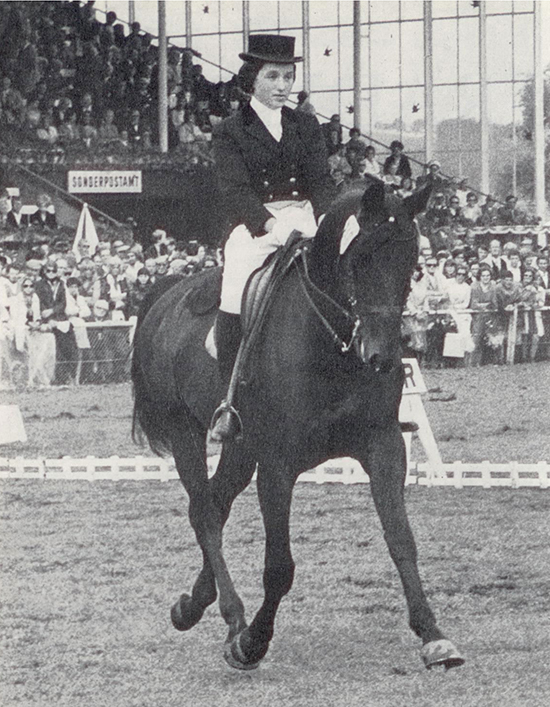
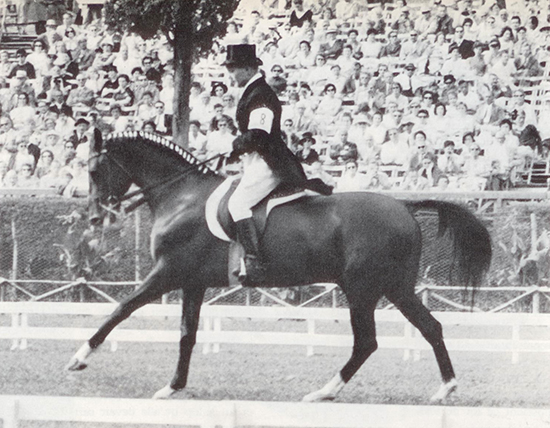
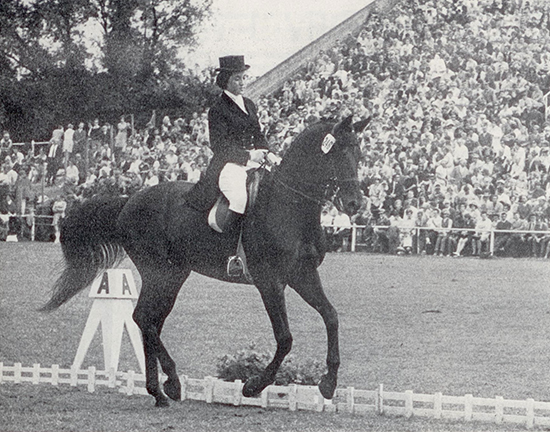
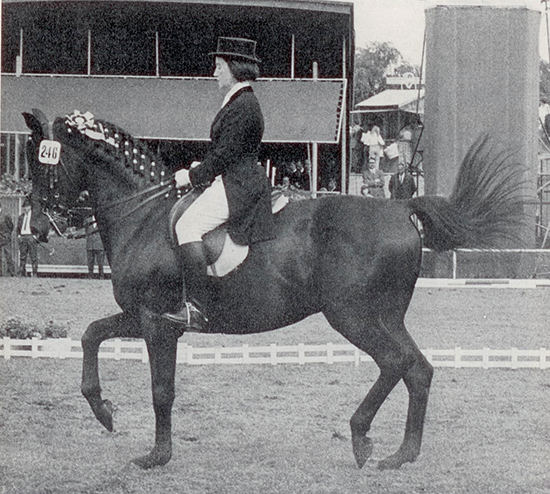
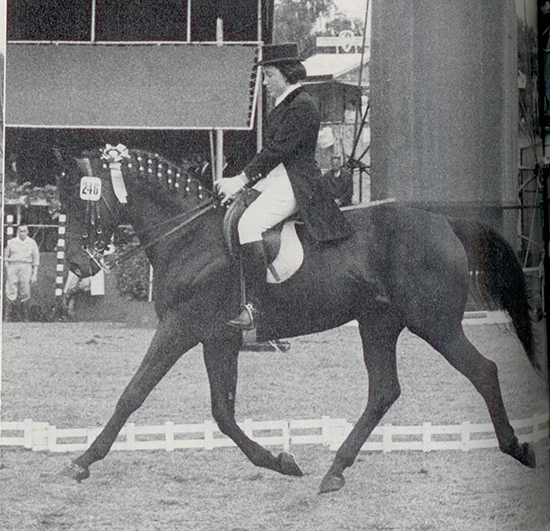
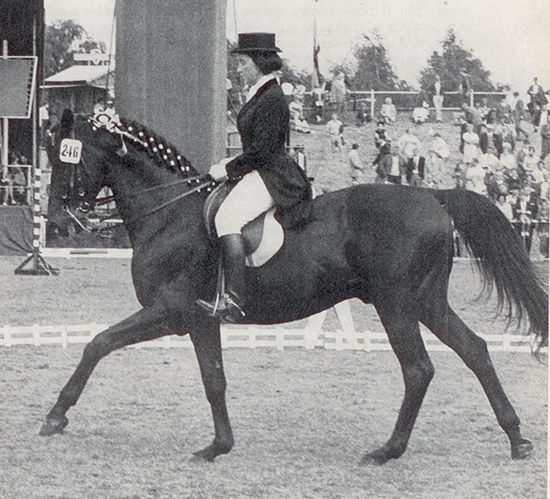
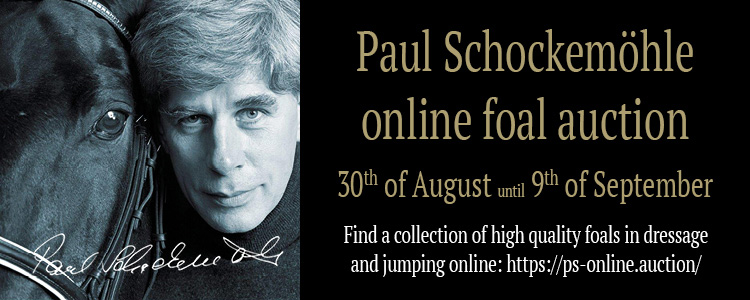
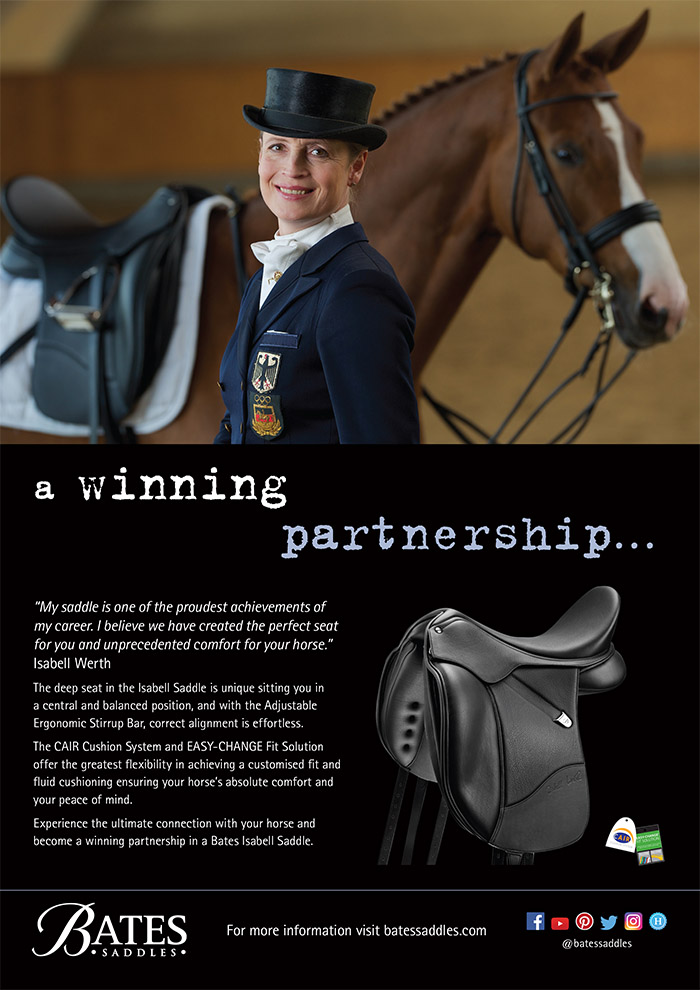

An amazing lady , with any very intelligent approach to horseriding especially dressage.
Would it be lovely to have her in Australia to teach people.
I was very interested to read about Absent and Col Filatov.
I also heard he was cruel, doing piaffe for 10 minutes on the spot.